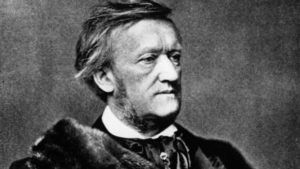
The Ring in San Francisco: ‘I Saw The World End’ & ‘Kip’ Cranna’s Exploration of Wagner’s Tetralogy
By Lois SilversteinSan Francisco Opera is in the midst of its month-long festival dedicated to Wagner’s “Ring Cycle.” In the coming weeks, Lois Silverstein will explore her experience not only revisiting the 2018 opera production but several of the events and panels presented by the company.
A delightful and informative series of lectures on “The Ring” comes from Dr. Clifford “Kip” Cranna, Dramaturg Emeritus of the San Francisco Opera, over the month-long Festival. Each of the four operas receives its own lecture, complete with the introduction of key characters, synopsis of the plot, expression of the main leitmotifs, and video clips from the San Francisco productions, 2011 and 2018, as well as some from the Metropolitan Opera and Bayreuth in the 1980s and 1990s. Cranna presented each opera with ample examples of scenes emphasizing the importance of listening as well as watching the screen.
In “Das Rheingold,” Cranna introduced the motifs as they appear from the outset, but not failing to indicate how Wagner juxtaposes different time periods against each other. The result of this is not only to effect to heighten the mystery of the characters as they evolve but also to thicken the texture which deepens throughout the cycle along with the story. This increases in “Die Walküre” when the intense drama of Sieglinde and Siegmund. Add to this Hunding, Wotan, and Brünnhilde, and we have a developing tapestry that can surely be appreciated on first hearing but will only grow to the marvelous over time, even within the boundary of “The Ring” itself.
By the time we get to “Siegfried” and “Götterdämmerung,” Cranna elaborated further how the explicit use of narrative to retell the story and recast the evolving story from different points of view, e.g. Alberich and Gutrune and Brünnhilde; he detailed new motifs and the variants that Wagner continues to introduce into the score and how abundant and specific they have become. Here we have both the use of the energetic forging on the anvil of both Mime and Siegfried, the fresh sound of the Forest Bird, and when he introduces the Chorus in “Götterdämmerung;” we experience Wagner’s own evolution over the twelve-year hiatus, during which he created “Tristan and Isolde” and “Die Meistersinger von Nürnberg.” Despite his using some of the Grand Opera traditions he inserted into “Götterdämmerung” – which text he wrote before the other operas- here is Wagner introducing more shimmer and more melodic shifts, deepening and enriching what had already been penetrating. His characters have grown from the opening opera, indeed; the growth from declaration to whisper and pianissimi show how ample his imaginative probing could be. The characters appear multi-faceted and compelling. The scene between Brünnhilde and Waltraute is only one example of how he plumbed the traditional duet with psychological depths.
Even if you know the trajectory of the Cycle, Kip Cranna illuminated more than the narrative. While we again learned of what happens, we were pointed to what it might mean beyond the surface plot and story. With the vast interweaving of the themes of death and fate, the passions of love and corruption, the reclaiming of humanity from the bondage of the gods fighting to fulfill their own desires, and the results on earth, Cranna invites us to continue to explore. At the end of each lecture, then, we avidly went to the opera streams again to immerse ourselves in the glorious musical tapestry with its penetrating message.
Categories
Special Features

